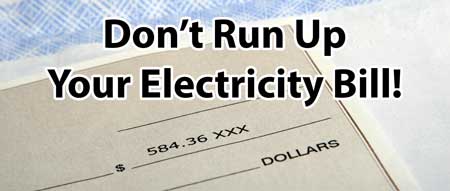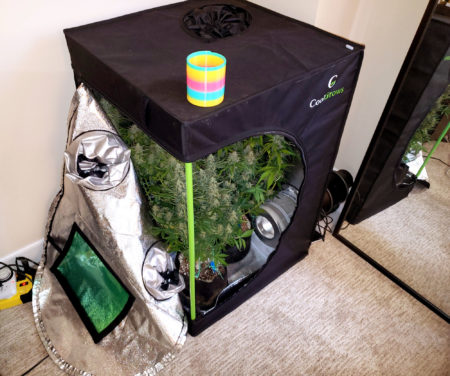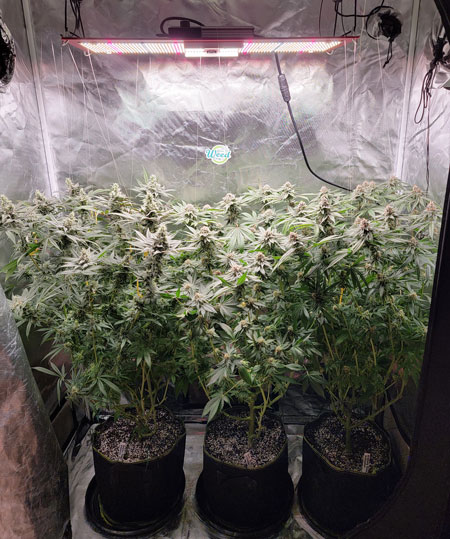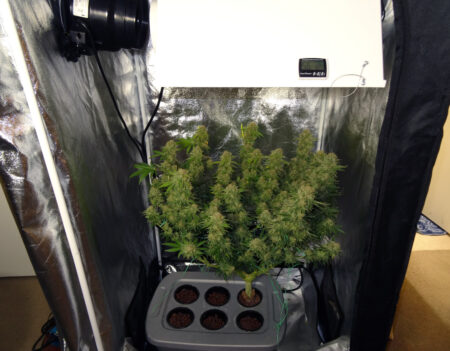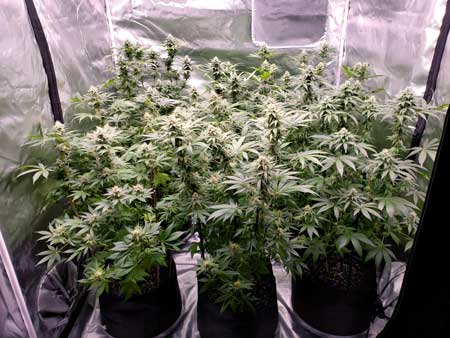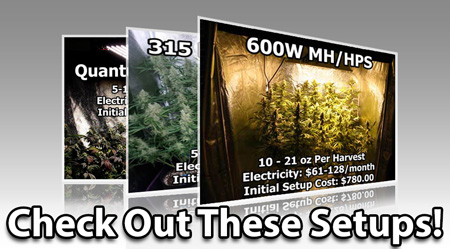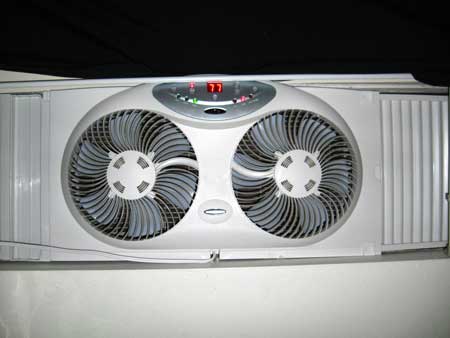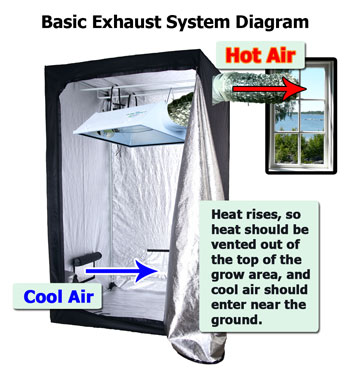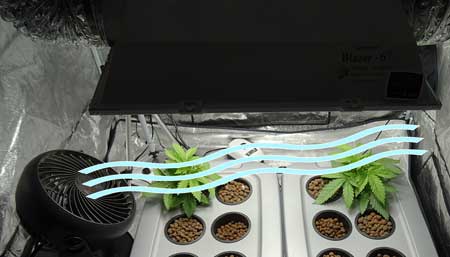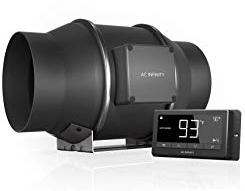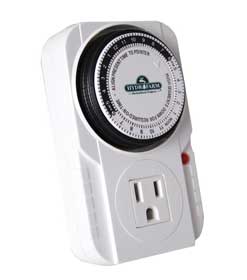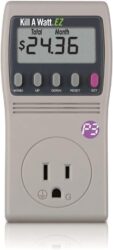by Nebula Haze
Growing weed indoors uses electricity to run grow lights, fans, pumps, and sometimes an AC. What can a grower do to save electricity to reduce the electricity bill each month and keep growing costs as low as possible? Over the years, I’ve learned a few tips to save electricity without hurting your cannabis yields, bud quality, or growth rates. I put this list together to help new or experienced growers reduce overall electrical power usage so you have more money in your pocket at the end of the month. Without further ado, here are 5 effective tips to save electricity with your cannabis grow.
Today you’ll learn how to save electricity in your indoor cannabis grow!
1.) Choose efficient cannabis grow lights (Most Important)
There are a few ways to look at efficiency. I think most growers should be thinking about, “How do I get the most premium weed out for the amount of electricity I put in?” And that means being smart about choosing the right grow light for your cannabis plants.
For example, LEDs typically use less power than other grow lights, but if you use an LED model that is not that great for growing cannabis, you can get poor yields and buds that lack potency. Using a bunch of electricity to power an unsuitable LED grow light is terrible for your electrical efficiency (even if the LED is technically “efficient”) because it results in less good weed for how many watts you put in.
To help guide you, I put together a list of the best cannabis grow lights I’ve used that get great yields-per-watt while producing high-quality potent buds. Most of the suggestions are LEDs, as they’re the best grow light for most cannabis growers who are trying to save electricity, but I’ve also included a few LECs and MH/HPS grow lights that get excellent results in cool grow rooms and are typically cheaper to start with if you want to grow large amounts of weed (like a pound at a time).
2’x2′ Grow Tent – Mini grow
- Ultra short edition – 3′ tall
- 65W – HLG 65 LED Grow Light
- 1-3 oz per harvest
- $300 to get started
- Room to grow – 4′ tall
- 100W – SF-1000 LED Grow Light
- 2-4 oz per harvest
- $430 to get started
Example of a 2’x2′ grow tent
2’x4′ Grow Tent (Rectangle shape is great for edge of a room) – Medium-size grow
- Standard Power – 5′ tall
- 200W – Spider Farmer SF-2000 LED grow light
- 5-11 oz per harvest
- $555 to get started with SF-2000
- Max Power – 6′ tall
- HLG 350R LED grow light
- 8-14 oz per harvest
- $700 to get started with HLG 350R
- Max Power (for cold grow room) – 6′ tall
- 315 LEC or 400W HPS (dimmable)
- 7-16 oz per harvest
- $745 to get started with 315 LEC
- $495 to get started with a 400W HPS
Here’s my last grow inside one of these. I think this is a great size for most home growers because it can yield many ounces (up to a pound per harvest depending on the grow light you use).
3’x3′ Grow Tent (Square shape is better for some spaces) – Medium-size grow
- Max Power – 6′ tall
- 300W – Mars Hydro FC-E3000
- 7-13 oz per harvest
- $475 to get started with FC-E3000
- Max Power (cold grow room) – 6′ tall
- 315 LEC or 400W HPS (dimmable)
- 7-16 oz per harvest
- $745 to get started with 315 LEC
- $495 to get started with a 400W HPS
Example of a single hydro plant growing in a 3’x3′ grow tent with a 400W HPS. You could fit more plants if you use pots instead of hydro. For some rooms, the square shape of a 3’x3′ is better than a rectangle.
4’x4′ Grow Tent – Large
- 1+ lb LED Producer – 6.5′ tall
- HLG Blackbird 600W LED grow light
- 11-22 oz per harvest
- $995 to get started with HLG Blackbird
- 1+ lb HPS Producer 6.5′ tall
- 600W HPS (dimmable)
- 10-21 oz per harvest
- $495 to get started with 600W HPS
Example of a 4’x4′ grow tent (easily yield a pound or more)
2.) Don’t use an AC (vent heat instead)
An air conditioner (aka an AC) can be used to cool a hot grow room, but it is a huge drain on electricity. You will save a ton of electricity by using a fan to vent the heat from your grow lights instead of using an AC to cool your grow space. If you’re growing in an open room, you can vent heat out a window easily. Even a window fan pointing out can help a lot. It takes a bit more creativity to vent heat out of a closet. If possible, I recommend getting a grow tent which is easy to set up with an efficient exhaust fan. That way you only need one fan (and no AC) to keep the grow space cool.
Learn how to use air circulation to save money and how to set up a grow tent.
A window fan can do a surprisingly good job of moving heat out of a room with smaller grow lights. I’m sure any window fan would work but I had good luck using this Bionaire Window fan to cool my grow room several degrees. A window fan is most effective if it’s cooler outside than inside, or if you have cool air in the house and pull cool air through the grow room by turning the fan facing outwards.
A strong efficient exhaust fan combined with some ducting is even better than using a window fan because you can vent heat from your grow tent directly outside. This makes it so that the grow lights barely change the temperature of the grow room. As a bonus, you typically need an exhaust fan anyway (so your plants aren’t cooking under the grow light), which means that simply adding some ducting to take that air to the window won’t add any electricity to your grow bill. If you set this up, it often means you won’t need to use an AC to keep the grow room cool.
You’re being smart about heat management if you vent heat out a window with ducting because the hot air never touches the inside of the grow room.
Learn more about how to vent heat from the cannabis grow space
3.) Pay attention to other electrical equipment (especially fans)
A lot of growers don’t think about the electricity used by fans or pumps (hydroponics). However, fans and pumps typically run 24 hours a day and inefficient ones can surprisingly add up to a lot of electricity over time.
- Exhaust fans (loud and cheap ones typically use a lot of electricity compared to premium quiet ones)
- Clip-on fans (especially if you’re using more than one)
- Oscillating fans in the room
- Pumps or automatic watering equipment
If you followed step 2, you likely only need one good fan in the grow space. The exhaust fan, when set up properly, should be able to vent all the heat from the grow light out of the grow space and (ideally) out a window. Needing a lot of fans is usually a sign that you’re just blowing heat around instead of actually venting it out.
Some fans use a ton of wattage, while others work just as well but barely use any electricity. The fans that use less electricity are usually also quieter (bonus!), but cost more initially. The investment is worth it because they can dramatically reduce your energy use long-term. Even small fans can be culprits. Clip-on fans, tabletop fans, or oscillating fans can use a surprising amount of electricity.
Airflow in the grow space is crucial, but are you using the wrong fan? Little fans like this one aren’t necessarily a bad idea but if your electrical bill is a concern they often use an unnecessary amount of electricity for what you get.
IMPORTANT: Fans don’t cool the air. Fans move heat around. Unless you’re venting heat out of the grow space, having a bunch of fans will move the air around but won’t actually bring down the temperature. It’s common for growers to keep adding more fans to try to control heat, as opposed to finding a way to vent heat out. This can end up adding a ton to your electricity use for no reason.
Clip-On Fans
Clip-on fans are some of the worst offenders because they seem like they wouldn’t use much electricity at all.
This $14 tiny clip-on fan uses 27W of electricity
Doesn’t seem like much, does it? But if you get 4 clip-on fans, that’s using over 100W of electricity whenever the fans are running. That is more electricity than an HLG 100 grow light (which can produce up to 5 ounces of premium dried bud at a time), or most exhaust fans. Yet it’s common to discount small fans when considering electricity usage.
Tabletop Fans
Tabletop fans are not very efficient either.
This $30 tabletop fan moves more air, but uses twice as much electricity at 55 watts
Two tabletop fans use as much electricity as 4 clip-on fans. You probably are getting more bang for your buck as far as breeze produced, but still not very efficient.
Exhaust Fans
Like I pointed out earlier about setting up a good exhaust system, you’ll save a ton of money on fans by getting one powerful exhaust fan as opposed to using a bunch of small fans. Let’s say you’re trying to cool your grow tent with an exhaust fan…
This 6″ ducting fan uses 37W of electricity and costs about $35 but does a terrible job of actually moving air to vent out heat
Note: In my experience, “ducting fans” are meant to move air from a bathroom and are not powerful enough to vent heat. They barely move air at all compared to your typical “exhaust fan”.
This generic 6″ exhaust fan is more powerful but far louder, uses 67W of electricity, and costs $60
The 6″ Cloudline Exhaust fan is similarly powerful, runs much quieter, and only uses 40W, but it costs $160
When it comes to fans, you have to consider what’s more important to you: how well it works, how much it costs, and how much electricity it uses in the long-run. I have a Cloudline fan and love it because it’s so quiet and efficient, but it was definitely an investment.
You may be able to get away with a ducting fan at first, especially if you’re on a really tight budget, but you’ll probably want to upgrade in the long run. At least that’s what I did after a few grows of struggling with heat.
Invest in a Good Fan Setup to Avoid Wasting Money on Electricity!
- Get a grow tent with a matching grow light (examples of suitable grow setups)
- Get an efficient exhaust fan
- You probably won’t need any other fans in the grow space
- Save money on electricity! (plus no need to buy extra fans)
Note: Other benefits of a good exhaust system is your grow space will be less humid and you gain the ability to filter smells with a carbon filter.
4.) Have grow lights turn on when energy is cheapest
Many places have cheaper electricity during times when people are using less, for example at night. That means that if you change your light schedule to turn on your grow lights when electricity is cheapest, it will save money.
On top of that, if you have your grow lights turn on at light, typically it’s easier to control heat because most grow rooms are cooler at night. Considering heat can reduce bud quality and potency, you may get multiple benefits from switching your light schedule.
How many hours of grow light a day for cannabis plants?
- Vegetative Stage and Autoflowering Plants: 18+ hours of light a day (set 6-hour dark period to when electricity is expensive)
- Flowering Stage (only photoperiod plants): 12 hours light, 12 hours dark (set 12-hour dark period to when electricity is expensive)
Use an electrical timer to set grow lights to turn off when electricity costs the most
5.) Invest in a Kill-a-Watt meter
This device can be used to measure how much electricity is being used by any piece of electrical equipment. If your electricity bill is too high every month, consider buying one of these to see which equipment in the grow room (or another part of the house) is using the most juice. Sometimes the results are surprising.
Use a Kill-a-Watt meter to directly measure how much energy is being used by anything
Bonus Non-Grow Related Tips to Save Electricity
While you’re at it, here are some other random tips to save electricity in the home:
- Use Kill-a-Watt to test everything*
- Now is the perfect time to use the Kill-a-Watt meter to test everything in your house that is plugged into a wall. Some appliances use more electricity than expected.
- Turn off lights and appliances when they are not in use.
- If something is rarely used, it’s also a good idea to unplug it completely. Some technology will slowly drain electricity even when turned off or not in use.
- If you’ve got old appliances like an old fridge, dishwasher, clothes washer/dryer, oven, etc. it can also save significant money to upgrade to a newer more efficient version.
- Use energy-efficient light bulbs
- Install a programmable thermostat to adjust the temperature in your home and automatically turn off heating/cooling when you’re not at home
- Use a power strip to easily turn off multiple devices at once.
- Seal any air leaks around windows and doors to reduce heating and cooling costs (helpful for growing too!)
- Adjust your water heater temperature. If you’ve ever noticed that hot water comes out of your tap at a temperature that’s hotter than you can use, it means you likely can lower the temperature setting on your water heater, which will save electricity.
* For example, I found my coffee maker used 900W of electricity while running. I had it set to stay on for 4 hours after brewing every day. I was able to save significant energy by just filling up my cup and turning the coffee maker off after my coffee brewed. The little things can add up.
Grow lights and fans typically use the most electricity in any grow setup so pay the most attention to that. Make good choices and you’ll be able to keep your electricity costs as low as possible while still achieving the yields you’re looking for.

